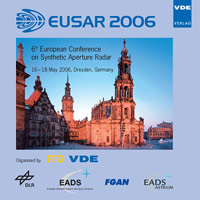Advanced Digital Technology Elements of Synthetic Aperture Radar Payload of RISAT Mission
Conference: EUSAR 2006 - 6th European Conference on Synthetic Aperture Radar
05/16/2006 - 05/18/2006 at Dresden, Germany
Proceedings: EUSAR 2006
Pages: 4Language: englishTyp: PDF
Personal VDE Members are entitled to a 10% discount on this title
Authors:
Desai, Nilesh M.; Vachhani, J. G.; Kumar, B. Saravana; Gujraty, V. R.; Rana, S. S. (MSDPD/MSDG/MRSA, Space Applications Centre (SAC), Ambawadi Vistar P.O., Indian Space Research Organisation (ISRO), Ahmedabad-380 015, INDIA)
Abstract:
The development of Airborne and Spaceborne Synthetic Aperture Radars (SAR) has been one of the major activities under ISRO / India’s Microwave Remote Sensing Program. An airborne C-band imaging SAR system, developed by ISRO in early 1990s, utilized then fairly advanced digital technology elements like High Speed Digitizers operating at 30.8 MHz and Real Time SAR Processor, based on multiple Digital Signal Processors (DSP). Currently, design and development work is under progress at Space Applications Centre, SAC, ISRO, Ahmedabad for a multi-mode, space-borne SAR for Radar Imaging Satellite (RISAT) mission. This spaceborne SAR will have different operating modes like Stripmap, ScanSAR, Spotlight and Sliding Spotlight and will have swath coverage on earth of 10-240 kms. with imaging resolutions of 1 to 50 meters. Various new and advanced technology elements like active antenna consisting of about 300 miniaturized Transmit/Receive modules with associated controls and onboard baseband Digital Subsystems like Data Acquisition and Compression system (DACS), Digital Chirp Generator (DCG), Distributed Embedded Controller consisting of Payload Controller (PLC), Tile Control Units (TCU) and TR Control (TRC) units, are under advanced stages of development for this RISAT SAR. This apart, RISAT Ground segment consisting of Real / Near Real Time Quick Look SAR Processor (QLP) and Ground Checkout Units (GCU) are also based on advanced technologies like cPCI modules and computers and new generation Floating Point DSPs and Field Programmable Gate Arrays (FPGA) devices. This paper gives the major details of design requirements, salient features and implementation details of these advanced digital technology elements utilized in the implementation of various onboard and ground based digital systems for multi-mode SAR sensor for ISRO’s RISAT satellite mission.


